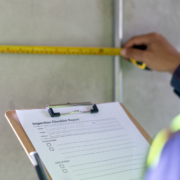The Critical Importance of Radon Testing in Your Pittsburgh Home
Radon gas is a silent intruder, colorless, odorless, and potentially lethal. It seeps into our homes through cracks in the foundation, gaps in flooring, or even our water supply, unbeknownst to us. As the leading cause of lung cancer among non-smokers, the importance of radon testing cannot be overstated. This invisible threat could be compromising the air quality in your home and endangering your family’s health.
Understanding Radon and Its Risks
Radon is a naturally occurring radioactive gas produced by the decay of uranium in soil, rock, and water. It can enter any home, old or new, creating an invisible health hazard that can only be detected through testing. The Environmental Protection Agency (EPA) estimates that about 1 in 15 homes in the United States has radon levels at or above the recommended action level. However, because radon levels can vary greatly even from house to house, the only way to know if your home is at risk is through radon testing.
Why Test for Radon?
Testing for radon is the first and most crucial step in protecting your home environment from this dangerous gas. Here’s why radon testing is indispensable:
- Health Protection: Radon is the second leading cause of lung cancer, responsible for about 21,000 lung cancer deaths every year in the U.S. alone. Testing helps identify high levels of radon in your home, allowing you to take necessary actions to mitigate this risk.
- Peace of Mind: Knowing that your home is safe from high levels of radon can provide you and your family with peace of mind. If radon levels are found to be high, mitigation systems can effectively reduce radon to safer levels.
- Home Value Preservation: If you’re considering selling your home, high radon levels can be a significant deterrent to potential buyers. Testing and mitigating radon can preserve, if not increase, your home’s value.
How to Test for Radon
Radon testing is simple and affordable. There are two primary methods: short-term and long-term testing. Short-term tests remain in your home for a few days to a week, while long-term tests measure radon levels for 90 days to a year, providing a more accurate assessment of average radon levels. DIY radon test kits are available, but for a thorough and accurate measurement, it’s advisable to hire professionals like Clarity Home Inspections, who can provide expert analysis and advice.










Leave a Reply
Want to join the discussion?Feel free to contribute!